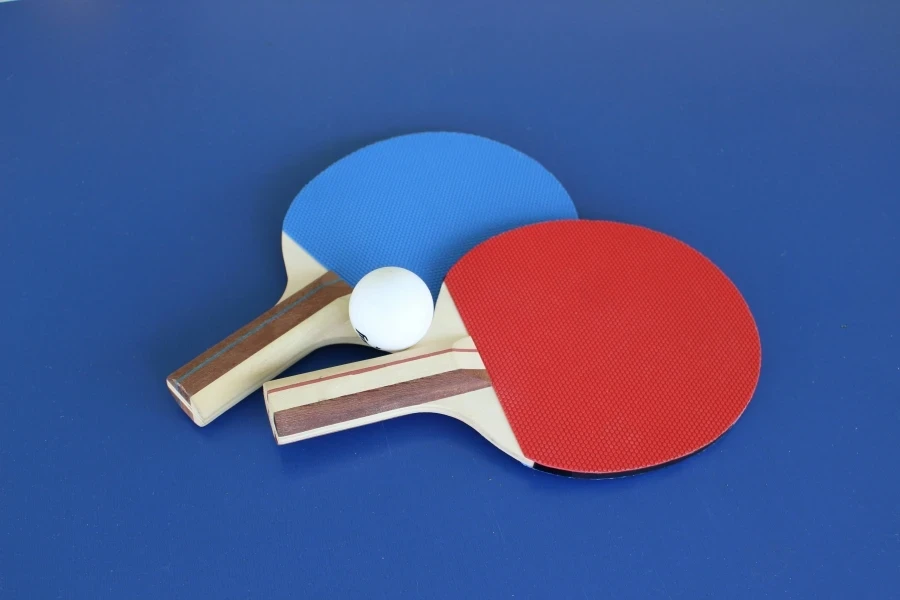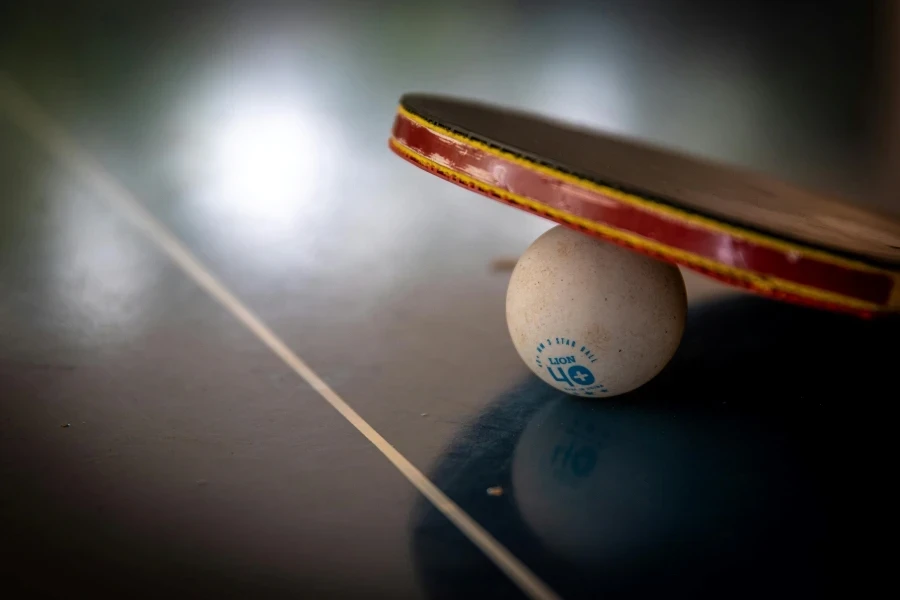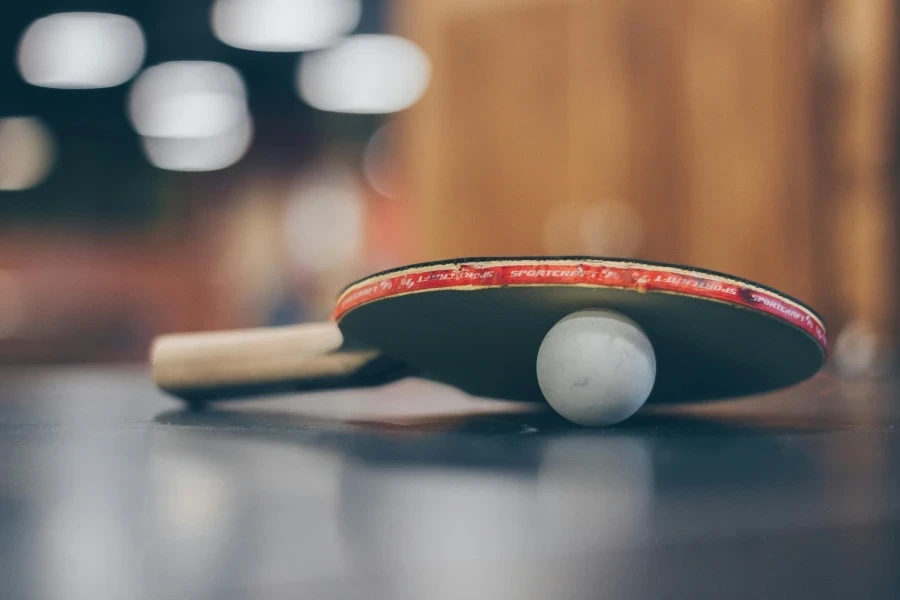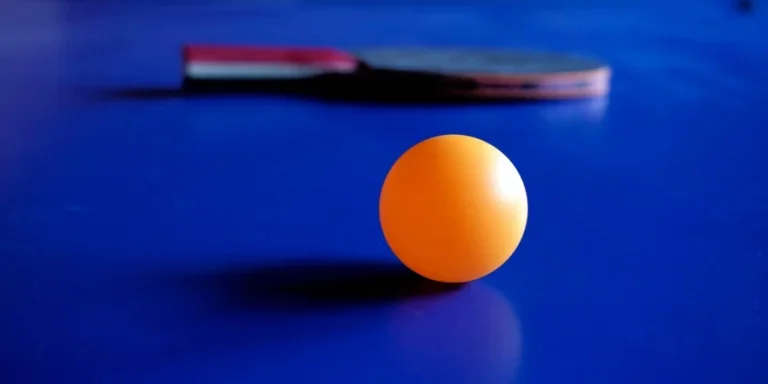Ping pong, also known as table tennis, is a sport that has gained immense popularity worldwide. The demand for high-quality ping pong balls is on the rise, driven by both professional and recreational players. This article delves into the market trends, key players, and segmentation of the ping pong ball industry, providing valuable insights for wholesale buyers.
Table of Contents:
Market Overview
Innovations in Ping Pong Ball Materials
Design and Features of Modern Ping Pong Balls
Technological Advancements in Ping Pong Balls
Conclusion
Market Overview

Global Demand for Ping Pong Balls
The global demand for ping pong balls has seen a significant increase in recent years. According to a report by Research and Markets, the table tennis equipment market, which includes ping pong balls, is expected to grow at a CAGR of 5.95% from 2024 to 2030. This growth is driven by the rising popularity of table tennis as a competitive sport and a recreational activity. The market is projected to reach USD 4.54 billion by 2030, up from USD 3.03 billion in 2023.
The increasing number of international and national competitions, regional tournaments, and community recreation programs has fueled the demand for high-quality ping pong balls. Additionally, the growing trend of online shopping has made it easier for consumers to access a wide range of table tennis equipment, further boosting market growth.
Key Players and Manufacturers
The ping pong ball market is dominated by several key players and manufacturers who have established a strong presence in the industry. Some of the leading companies include:
- Double Happiness (DHS): Known for its high-quality ping pong balls, DHS is a leading manufacturer in the table tennis industry. The company has a strong reputation for producing durable and consistent balls that meet international standards.
- Butterfly: Another major player in the market, Butterfly is renowned for its premium ping pong balls used in professional tournaments. The company focuses on innovation and quality, making it a preferred choice among top players.
- Nittaku: Nittaku is a Japanese manufacturer that produces high-quality ping pong balls known for their excellent performance and durability. The company’s balls are often used in international competitions, including the Olympics.
- Stiga: Stiga is a well-known brand in the table tennis industry, offering a wide range of ping pong balls for both professional and recreational use. The company emphasizes quality and innovation in its products.
These key players invest heavily in research and development to improve the quality and performance of their ping pong balls. They also focus on expanding their distribution channels to reach a broader audience and enhance their marketability.
Market Segmentation and Target Audience
The ping pong ball market can be segmented based on various factors, including material, application, and distribution channel.
- Material: Ping pong balls are primarily made from celluloid or ABS plastic. The shift from celluloid to ABS plastic has been driven by safety and environmental concerns. ABS plastic balls are more durable and provide better performance, making them the preferred choice among players.
- Application: The market can be segmented into professional and recreational use. Professional players and tournaments require high-quality balls that meet international standards, while recreational players may opt for more affordable options.
- Distribution Channel: The distribution channels for ping pong balls include online and offline stores. The rise of e-commerce has made it easier for consumers to purchase table tennis equipment online, contributing to market growth. Offline stores, such as specialty sports shops and supermarkets, also play a significant role in the distribution of ping pong balls.
The target audience for ping pong balls includes professional players, amateur players, clubs, schools, and recreational centers. The growing interest in table tennis across different age groups and skill levels has expanded the market’s target audience, creating new opportunities for manufacturers and distributors.
Innovations in Ping Pong Ball Materials

Evolution of Materials: From Celluloid to ABS Plastic
The evolution of ping pong ball materials has been a significant journey, marked by technological advancements and regulatory changes. Initially, ping pong balls were made from celluloid, a highly flammable material that posed safety risks. The International Table Tennis Federation (ITTF) recognized these hazards and began exploring alternatives. This led to the introduction of ABS (Acrylonitrile Butadiene Styrene) plastic balls, which have become the standard in professional and recreational table tennis.
ABS plastic offers several advantages over celluloid. It is less flammable, more durable, and provides a consistent bounce, which is crucial for competitive play. The transition to ABS plastic was not without challenges, as manufacturers had to fine-tune the production process to meet the ITTF’s stringent standards. However, the benefits of ABS plastic have made it the preferred choice for modern ping pong balls.
Impact on Performance and Durability
The shift from celluloid to ABS plastic has had a profound impact on the performance and durability of ping pong balls. ABS plastic balls are more resilient, withstanding the rigors of intense play without deforming or breaking easily. This durability ensures a longer lifespan, reducing the frequency of replacements and providing better value for players.
In terms of performance, ABS plastic balls offer a more consistent bounce and spin, which enhances the overall playing experience. The uniformity in weight and size of these balls contributes to a predictable trajectory, allowing players to develop and refine their skills with greater precision. This consistency is particularly important in competitive settings, where even minor variations can affect the outcome of a match.
Environmental Considerations
While ABS plastic has improved the safety and performance of ping pong balls, it also raises environmental concerns. Plastic waste is a significant issue globally, and the sports industry is not immune to its impact. Manufacturers are increasingly exploring eco-friendly alternatives and sustainable practices to mitigate the environmental footprint of ping pong balls.
One approach is the development of biodegradable materials that can replace ABS plastic without compromising performance. Additionally, recycling programs and initiatives to reduce plastic waste are being implemented by leading brands. These efforts align with the broader trend towards sustainability in the sports and outdoor industry, as reported by various market analyses.
Design and Features of Modern Ping Pong Balls

Texture and Surface Enhancements
Modern ping pong balls have seen significant improvements in texture and surface design. The surface of a ping pong ball plays a crucial role in its interaction with the paddle and the table, affecting spin and control. Manufacturers have introduced micro-textured surfaces that enhance grip and spin capabilities, providing players with better control over their shots.
These surface enhancements are achieved through advanced manufacturing techniques that ensure uniformity and precision. The result is a ball that not only performs better but also offers a more enjoyable playing experience. Players can execute a wider range of shots with greater accuracy, making the game more dynamic and engaging.
Size and Weight Standards
The ITTF has established strict size and weight standards for ping pong balls to ensure fairness and consistency in competitive play. According to these standards, a ping pong ball must have a diameter of 40mm and weigh 2.7 grams. These specifications are meticulously adhered to by manufacturers, who use precision engineering to produce balls that meet these criteria.
The consistency in size and weight is essential for maintaining the integrity of the game. It ensures that all players, regardless of their skill level, compete on a level playing field. This standardization also facilitates the development of equipment and training programs tailored to these specifications, further enhancing the sport’s accessibility and appeal.
Customization Options for Branding and Events
Customization has become a popular trend in the sports industry, and ping pong balls are no exception. Brands and event organizers often seek customized ping pong balls for promotional purposes or to enhance the visibility of their events. Customization options include printing logos, event names, and other graphics on the balls.
This trend is particularly prevalent in corporate events, tournaments, and promotional campaigns. Customized ping pong balls serve as effective marketing tools, creating a lasting impression on participants and spectators. They also add a unique touch to events, making them more memorable and engaging.
Technological Advancements in Ping Pong Balls

Precision Manufacturing Techniques
The production of modern ping pong balls involves advanced precision manufacturing techniques. These techniques ensure that each ball meets the stringent standards set by the ITTF. High-precision molds and automated production lines are used to achieve uniformity in size, weight, and surface texture.
These advancements have significantly improved the quality and consistency of ping pong balls. Players can rely on the performance of these balls, knowing that they meet the highest standards of the sport. This precision is particularly important in competitive settings, where even minor deviations can impact the outcome of a match.
Quality Control and Consistency
Quality control is a critical aspect of ping pong ball manufacturing. Manufacturers implement rigorous testing procedures to ensure that each ball meets the required specifications. These tests include measurements of diameter, weight, bounce, and roundness, among other parameters.
Consistency is key to maintaining the integrity of the sport. By adhering to strict quality control measures, manufacturers can produce balls that offer reliable performance across different batches. This consistency is essential for players, who need to trust that the equipment they use will perform as expected.
Smart Ping Pong Balls: The Future of Table Tennis
The future of ping pong balls lies in the integration of smart technology. Smart ping pong balls are equipped with sensors that can track various metrics, such as spin, speed, and trajectory. These data points can be analyzed to provide insights into a player’s performance, helping them to identify areas for improvement.
Smart ping pong balls are still in the early stages of development, but they hold great potential for revolutionizing the sport. They can be used in training programs to provide real-time feedback, enhancing the effectiveness of practice sessions. Additionally, they can be integrated into competitive play, offering new ways to analyze and understand the game.
Conclusion
The evolution of ping pong balls from celluloid to ABS plastic has brought significant improvements in safety, performance, and durability. Modern design enhancements and technological advancements have further elevated the quality and consistency of these balls. As the industry continues to innovate, the future of ping pong balls looks promising, with smart technology poised to revolutionize the sport. Embracing these innovations will not only enhance the playing experience but also contribute to the sustainability and growth of table tennis.




